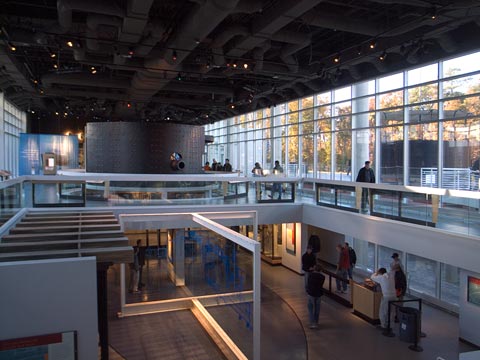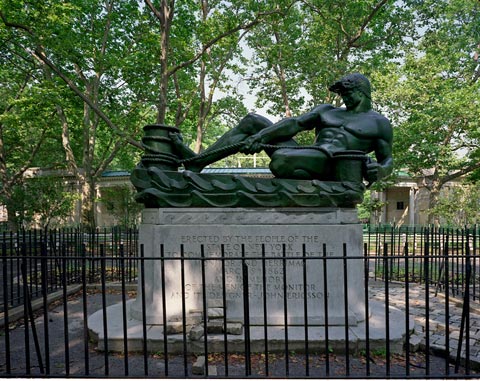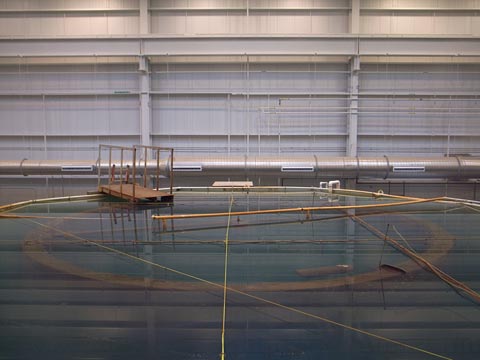I traveled with my family to Virginia for the Thanksgiving holiday to visit with my parents–separately–as has been necessary since their divorce a long time ago. Extended sit downs with one parent or the other are to be avoided since they usually, unfortunately, turn painful. My mother reminisces about my growing up, remembering things as a parallel universe that barely jibes with my own recollections. My father, who is elderly but not senile, cannot or chooses not to remember anything at all.

The Monitor Center, The Mariner’s Museum, Newport News, Virginia
So, excursions out into the real world are necessary, especially since we are traveling with a nine year old who is not content to sit around the living room. This time we drove down the peninsula (between the James and York rivers) to the Mariner’s Museum in Newport News. I’d only been there once as a child and knew that much had changed in the last few years, most notably the building of the Monitor Center, a new wing of the museum to house the recently recovered turret of the ironclad Civil War ship the Monitor.
The Monitor Center is actually a vast addition to the original museum, perhaps doubling its size, and it tells the story of the famous battle between the Monitor and the Merrimac (dubbed the Virginia by the Confederates). The center includes interior and exterior mock-ups of both ships as well as the actual rotating gun turret of the original ship salvaged from beneath the sea off the Outer Banks of North Carolina.

Monitor memorial, Greenpoint, Brooklyn
Earlier this summer I photographed the Monitor memorial in McGolrick Park in Greenpoint as part of a documentation of Civil War monuments in Brooklyn. Standing before the memorial for the first time I wondered why this rather odd statue was placed here. On it were the words:
STATE OF NEW YORK
TO COMMEMORATE THE BATTLE OF THE
MONTOR AND MERRIMAC
MARCH 9TH 1862
AND IN MEMORY OF THE MEN OF THE MONITOR
AND ITS DESIGNER JOHN ERICSSON
So it goes with a majority of memorials that inhabit, often invisibly, the streets and parks we pass through daily. The event, person, or locale depicted has, with the passing of time, become disconnected from our own era. These, often, lavish tours de force of sculpture serve more as urban furniture than as carriers of memory or history.

The Monitor’s turret
In Hampton Roads, in the heart of Navy country, the battle between the Monitor and Merrimac is central to the region’s symbology and meaning. The Monitor’s turret lies in repose beneath a watery solution (eventually to be exhibited dry) like Lenin embalmed in his tomb in Red Square. The accompanying exhibition is exhaustive in detail, almost fetishistic in its focus on this one story and object.
In New York, however, where the Monitor was built, there are two monuments offering cryptic references to the ship and the battle. One is the strange sculpture in Greenpoint, the other is a statue of Ericsson in Battery Park in Manhattan, which I have undoubtedly walked by, but have so recollection of ever seeing.